 W
WA chondrite is a stony (non-metallic) meteorite that has not been modified, by either melting or differentiation of the parent body. They are formed when various types of dust and small grains in the early Solar System accreted to form primitive asteroids. Some such bodies that are captured in the planet’s gravity well become the most common type of meteorite by arriving on a trajectory toward the Earth’s surface. Estimates for their contribution to the total meteorite population vary between 85.7% and 86.2%.
 W
WAarhus is an H chondrite meteorite that fell to earth on 2 October 1951 at 18:15 in Aarhus, Denmark. The meteor split just before the otherwise undramatic impact and two pieces were recovered. They are known as Aarhus I and Aarhus II. Aarhus I was found in the small woodland of Riis Skov, just a few minutes after impact.
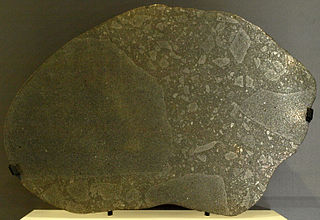 W
WAbee is an enstatite chondrite meteorite that fell on 9 June 1952 in Alberta, Canada.
 W
WAlais or Allais is the first carbonaceous chondrite meteorite identified. It fell near Alès in 1806 in multiple fragments which together weighed 6 kg, although only 0.26 kg (9.2 oz) remains. The meteorite contains a number of elements in similar proportions to the solar system in its primordial state. It also contains organic compounds and water. It has proved to be one of the most important meteorites discovered in France.
 W
WAlbareto is a meteorite which in July 1766 fell near the frazione Albareto, of Modena, Emilia-Romagna, Italy.
 W
WAllegan is a type 5 H chondrite meteorite that landed in Michigan on July 10, 1899. Allegan weighed around fifty pounds after its landing. As of 1964, it was one of only seven known meteorites to land in Michigan.
 W
WThe Allende meteorite is the largest carbonaceous chondrite ever found on Earth. The fireball was witnessed at 01:05 on February 8, 1969, falling over the Mexican state of Chihuahua. After breaking up in the atmosphere, an extensive search for pieces was conducted and over 2 tonnes (tons) of meteorite were recovered. The availability of large quantities of samples of the scientifically-important chondrite class has enabled numerous investigations by many scientists; it is often described as "the best-studied meteorite in history." The Allende meteorite has abundant, large calcium-aluminium-rich inclusions (CAI), which are among the oldest objects formed in the Solar System.
 W
WArbol Solo is an H chondrite meteorite that fell to earth on September 11, 1954, in the province of San Luis, Argentina.
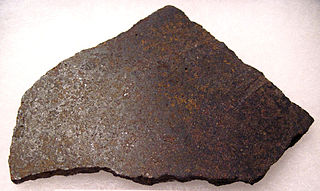 W
WArroyo Aguiar is an H chondrite meteorite that fell to earth during the summer of 1950 in the province of Santa Fe, Argentina.
 W
WAvanhandava is an H chondrite meteorite that fell to earth in 1952 in São Paulo, Brazil.
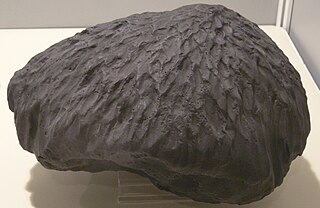 W
WBaszkówka is an L5 ordinary chondrite meteorite which fell on 25 August 1994 in Baszkówka village, 23 km SSW of Warsaw. The fall occurred at around 4:00 pm. Several people heard a sonic boom and one woman witnessed a movement on the surface of cultivated land 200 m away from her. Single specimen of a meteorite with radial regmaglypts was recovered immediately.
 W
WThe Bench Crater meteorite is a meteorite discovered on the Moon by Apollo 12 astronauts in 1969. It is part of lunar sample 12037. It was the first meteorite to be discovered on a Solar System body other than the Earth. Its diameter is just a few millimeters. It is listed as a carbonaceous chondrite by the Meteoritical Society.
 W
WThe Braunschweig meteorite is a 1.3 kilograms meteorite that hit Melverode, a suburb in Braunschweig, Germany, at around 2:05 AM on April 23, 2013. It hit the concrete pavement in front of the home of Erhard Seemann, breaking into hundreds of fragments on impact, the largest of which is 214 grams. The meteorite created a small impact crater in the concrete, with a diameter of 7 cm (2.8 in) and a depth of 3 cm (1.2 in).
 W
WBuzzard Coulee is the collective name of the meteorites fallen on November 20, 2008 over Saskatchewan, Canada.
 W
WThe Chelyabinsk meteorite is the fragmented remains of the large Chelyabinsk meteor of 15 February 2013 which reached the ground after the meteor's passage through the atmosphere. The descent of the meteor, visible as a brilliant superbolide in the morning sky, caused a series of shock waves that shattered windows, damaged approximately 7,200 buildings and left 1,500 people injured. The resulting fragments were scattered over a wide area.
 W
WChergach is a meteorite found at southwest of El Mokhtar, Erg Chech, Timbuktu district, Mali. It fell on 2 or 3 July 2007, in daytime, and was composed of ordinary chondrite (H5).
 W
WA chondrule is a round grain found in a chondrite. Chondrules form as molten or partially molten droplets in space before being accreted to their parent asteroids. Because chondrites represent one of the oldest solid materials within the Solar System and are believed to be the building blocks of the planetary system, it follows that an understanding of the formation of chondrules is important to understand the initial development of the planetary system.
 W
WDingle Dell is a 1.15 kg ordinary chondrite of subclass L/LL5, and the fourth meteorite to be recovered by the Desert Fireball Network camera observatory. It fell in the Morawa region of Western Australia on 31 October 2016 8:05 pm local time, and was recovered less than a week later, on the morning of 7 November, in a paddock at Dingle Dell farm. Given the rapid turnaround for meteorite recovery and a lack of rainfall between fall date and find date, the rock is in pristine condition and shows no evidence of terrestrial weathering (W0). This particular meteorite fall demonstrates the proficiency of the DFN as a sample recovery tool for meteoritics.
 W
WThe Ensisheim meteorite is a stony meteorite that fell on November 7, 1492 in a wheat field outside the walled town of Ensisheim in then Alsace, Further Austria. The meteorite can still be seen in Ensisheim's museum, the sixteenth-century Musée de la Régence.
 W
WGao–Guenie is a H5 ordinary chondrite meteorite that fell on Burkina Faso, West Africa, on March 5, 1960. The fall was composed of many fragments and it is one of the largest observed meteorite showers in Africa to date.
 W
WThe Hadley Rille meteorite was a meteorite discovered on the Moon at coordinates 26° 26' 0" N, 3° 39' 20" E, or Station 9A, during the Apollo 15 mission in 1971. It was the second meteorite to be discovered on a Solar System body other than the Earth. The first was the Bench Crater meteorite, discovered in 1969 during the Apollo 12 mission.
 W
WHomestead is a L5 meteorite fallen in 1875 in Iowa, United States.
 W
WThe Jbilet Wiselwan meteorite is a CM-type carbonaceous chondrite found in Western Sahara in 2013.
 W
WFifteen pieces of the Kainsaz meteorite were seen to fall near Kainsaz, Muslyumovo, Tatarstan in September 13, 1937. The largest weighed 102.5 kilograms (226 lb), the total weight was ~200 kilograms (440 lb). As of January 2013 pieces were on sale for ~US$100/g. Kainsaz is the only observed fall in Tatarstan.
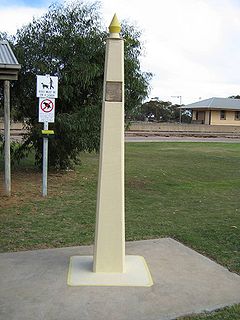 W
WThe Karoonda meteorite fell to earth on 25 November 1930 at 10:53 pm near the South Australian town of Karoonda.
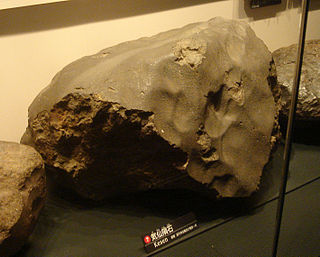 W
WThe Kesen Meteorite is a meteorite that fell on June 13, 1850, landing in a swamp in the outskirts of the City of Rikuzentakata, Kesen District in Iwate Prefecture, Japan.
 W
WL'Aigle is a L6 meteorite which fell on 26 April 1803 in Lower Normandy, France.
 W
WThe Middlesbrough Meteorite fell in Middlesbrough, North Yorkshire, England on 14 March 1881.
 W
WMoss is a carbonaceous chondrite meteorite that fell over the communities of Rygge and Moss in Østfold county, southeast southern Norway in the morning of midsummer day, July 14, 2006.
 W
WThe Murchison meteorite is a meteorite that fell in Australia in 1969 near Murchison, Victoria. It belongs to a group of meteorites rich in organic compounds. Due to its mass and the fact that it was an observed fall, the Murchison meteorite is one of the most studied of all meteorites.
 W
WMurrilli (Moo-da-lee) is an ordinary chondrite of subclass type H5. It is the third meteorite to be recovered using the Australia Desert Fireball Network (DFN) camera observatory. It was observed to fall on 27 November 2015 at 9:15pm local time in South Australia, and recovered by the DFN team on 31 December 2015 from Lake Eyre. As this region is a salt lake, the 1.68 kg rock punched a hole through the ground and was found 0.43 m below the surface. It was recovered 218m from the predicted fall line location.
 W
WNeuschwanstein was an enstatite chondrite meteorite that fell to Earth on 6 April 2002 at 22:20:18 GMT near Neuschwanstein Castle, Bavaria, at the Germany–Austria border.
 W
WNorthwest Africa 801 is a carbonaceous chondrite meteorite found in 2001 in Morocco. It has a mass of 5kg and was purchased in Zagora, Morocco. At over 4.5 billions years old, it is older than the Earth. In November 2019, along with the Murchison meteorite it was the first to provide evidence of ribose in space and its transport to Earth, in an analysis of its composition by gas chromatography mass spectrometry. According to Yoshihiro Furukawa of Tohoku University, "the extraterrestrial sugar might have contributed to the formation of RNA on the prebiotic Earth which possibly led to the origin of life."
 W
WThe NWA 3009 meteorite was found in Northwest Africa during 2001.
 W
WThe Novato meteorite is an ordinary chondrite which entered the earth's atmosphere and broke up over Northern California at 19:44 Pacific Time on 17 October 2012. The fireball created sonic booms and fragmented. The meteoroid was about 35 centimeters (14 in) across.
 W
WThe Oldenburg meteorite fell 23 km from Oldenburg, Niedersachsen, Germany on 10 September 1930, one stone falling in Bissel, the other in Beverbruch.
 W
WOrgueil is a scientifically important carbonaceous chondrite meteorite that fell in southwestern France in 1864.
 W
WOurique is a H4 meteorite fallen in 1998 in Portugal.
 W
WThe Paragould Meteorite at 41 inches (1,000 mm) by 24 inches (610 mm) by 16 inches (410 mm) and weighing 370 kilograms (820 lb) is the second largest witnessed meteorite fall ever recovered in North America and the largest stony meteorite chondrite. It fell to Earth at approximately 4:08 a.m. on February 17, 1930.
 W
WPark Forest is an L5 chondrite meteorite that fell on 26 March 2003 in Illinois, United States.
 W
WPeace River is a L6 chondrite meteorite fall on the morning of March 31, 1963.
 W
WThe Příbram meteorite fell on 7 April 1959 east of Příbram, former Czechoslovakia. Four pieces were found, the largest having a mass of 4.425 kilograms (9.76 lb).
 W
WPultusk is an H5 ordinary chondrite meteorite which fell on 30 January 1868 in Poland. The event has been known as the stony meteorite shower with the largest number of pieces yet recorded in history. Made up of rocky debris, it consists of pyroxene or olivine chondrules deployed in mass plagioclase, there being also kamacite.
 W
WThe Richardton meteorite is a 90 kilograms (200 lb) H5 Ordinary chondrite that was seen to fall at 21:48 on 30 June 1918 between Mott, North Dakota and Richardton, North Dakota, United States.
 W
WSołtmany is an L6 ordinary chondrite meteorite which fell on 30 April 2011 in Sołtmany village, Poland. The fall occurred at around 6:00 am. A single meteorite penetrated the edge of a roof and shattered on concrete floor into several pieces. It was immediately found by the owners of the farm, alarmed by the loud noise.
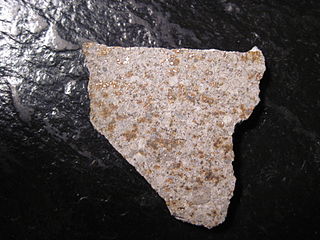 W
WSulagiri is the official name of the meteorite which fell on 12 September 2008 in Sulagiri, Krishnagiri District, Tamil Nadu, India.
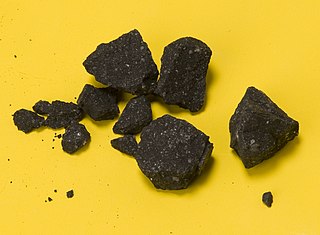 W
WThe Sutter's Mill meteorite is a carbonaceous chondrite which entered the Earth's atmosphere and broke up at about 07:51 Pacific Time on April 22, 2012, with fragments landing in the United States. The name comes from the Sutter's Mill, a California Gold Rush site, near which some pieces were recovered. Meteor astronomer Peter Jenniskens assigned Sutter's Mill (SM) numbers to each meteorite, with the documented find location preserving information about where a given meteorite was located in the impacting meteoroid. As of May 2014, 79 fragments had been publicly documented with a find location. The largest (SM53) weighs 205 grams (7.2 oz), and the second largest (SM50) weighs 42 grams (1.5 oz).
 W
WThe Sylacauga meteorite fell on November 30, 1954, at 12:46 local time in Oak Grove, Alabama, near Sylacauga. It is commonly called the Hodges meteorite because a fragment of it struck Ann Elizabeth Fowler Hodges (1920–1972).
 W
WThe Tagish Lake meteorite fell at 16:43 UTC on 18 January 2000 in the Tagish Lake area in northwestern British Columbia, Canada.
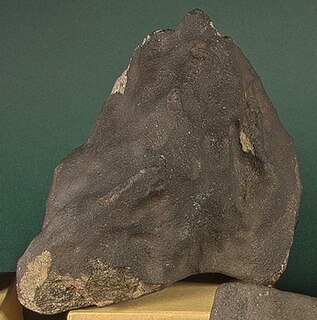 W
WThe Tamdakht meteorite fell near Ouarzazate, Morocco on 2008-12-20 producing a strewn field of approximately 25 kilometres (16 mi) by 2 kilometres (1.2 mi) and two small impact craters, one of about 1.1 metres diameter and 70 centimetres (28 in) depth at 31°09.8′N 7°00.9′W and the other of about 20 centimetres (7.9 in) diameter and 10 centimetres (3.9 in) depth at 31°09.9′N 07°02.3′W.
 W
WTenham meteorites are the fragments of a larger meteorite that fell in 1879 in a remote area of Australia near the Tenham station, South Gregory, in western Queensland. Although the fall was seen by a number of people, its exact date has not been established. Bright meteors were seen to be moving roughly from west to east. Stones were subsequently recovered from over a large area, about 20 kilometres (12 mi) long by 5 kilometres (3.1 mi) wide.
 W
WTonk is a small carbonaceous chondrite meteorite that fell near Tonk, India in 1911. Despite its small size, it is often included in studies due to its compositional similarity to the early solar system.
 W
WThe Wold Cottage meteorite fell near Wold Cottage farm in 1795, a few miles away from the village of Wold Newton in Yorkshire, England.
 W
WŽemaitkiemis meteorite is an ordinary chondrite that fell near Žemaitkiemis, Lithuania at about 8:33 pm on 2 February 1933. Using the argon–argon dating method, scientists have calculated its age to be about 520 million years.